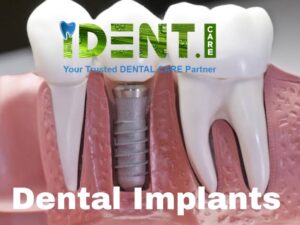
Dental Implants: A Comprehensive Guide to Restore Your Smile
If you are missing one or more teeth, dental implants may be the solution you’ve been looking for. Dental implants are artificial tooth roots that provide a permanent base for replacement teeth. They are designed to look, feel, and function like natural teeth, and they can help restore your confidence and improve your oral health.
Here’s everything you need to know about dental implants, including the most searched keywords related to this topic:
What Are Dental Implants?
Dental implants are small titanium posts that are surgically placed into the jawbone to replace missing tooth roots. They are biocompatible, which means that they are not rejected by the body and can fuse with the bone to create a stable foundation for replacement teeth.
Why Do You Need Dental Implants?
Dental implants offer several benefits over other tooth replacement options, such as dentures and bridges. Some of the most important benefits of dental implants include:
Improved oral health: Dental implants can help preserve the surrounding teeth and prevent bone loss that can occur when teeth are missing.
Natural appearance: Dental implants are designed to look and feel like natural teeth, so they can restore your smile and confidence.
Durability: Dental implants are a long-term solution that can last for many years with proper care.
Improved comfort and function: Unlike dentures, which can slip and cause discomfort, dental implants are securely anchored in the jawbone and allow you to eat and speak with ease.
Types of Dental Implants:
Endosteal implants: These are the most common type of dental implants and are placed directly into the jawbone. They are typically used for patients with enough jawbone density to support the implant.
Subperiosteal implants: These are placed on top of the jawbone and under the gum tissue. They are typically used for patients who do not have enough jawbone density to support endosteal implants.
Zygomatic implants: These are used for patients who have significant bone loss in the upper jaw and cannot undergo traditional implant surgery.
Dental Implant Procedure:
The dental implant procedure typically involves several stages:
Consultation: Your dentist will examine your mouth and jaw to determine if you are a good candidate for dental implants.
Implant placement: The implant will be surgically placed into the jawbone, and a temporary crown may be attached while the implant fuses with the bone.
Osseointegration: This is the process by which the implant fuses with the jawbone, creating a stable foundation for the replacement tooth.
Abutment placement: Once osseointegration is complete, an abutment will be attached to the implant to hold the replacement tooth in place.
Crown placement: The final step involves attaching the replacement tooth, which may be a crown, bridge, or denture, to the abutment.
Aftercare:
To ensure the long-term success of your dental implants, it’s important to follow a good oral hygiene routine and visit your dentist regularly for check-ups and cleanings.
Some important aftercare tips include:
Brush and floss regularly to keep your teeth and gums healthy.
Avoid hard or sticky foods that can damage the implant or crown.
Quit smoking, which can increase the risk of implant failure.
Visit your dentist every six months for a check-up and cleaning.

Very informative article